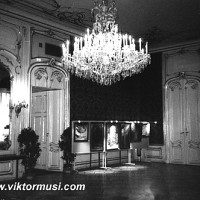 HOFBURG PALACE.
HOFBURG PALACE.
For over 600 years the Vienna Hofburg Palace was the residence of the Austrian sovereigns. Over the course of the centuries it developed into one of the most important centres of European history. It was from here that the Habsburgs reigned from the 13th century, at first as rulers of the Austrian patrimonial lands, from 1452 as emperors of the Holy Roman Empire, and finally as emperors of Austria from 1806 until the end of the monarchy in 1918.
Originally a medieval fortified castle dating from the 13th century, the Hofburg was extended by each emperor, eventually coming to resemble a ‘city within a city’. The sprawling, asymmetric complex which extends over 240,000 m² consists of 18 wings, 19 courtyards and 2,600 rooms in which nearly 5,000 people still work and live today.
Until 1918 the extensive palatial complex at the heart of Vienna was the political centre of the monarchy. Today it fulfils the same role for the democratic Republic of Austria. The rooms where once Emperor Joseph II drew up his revolutionary programme of reforms, where the Congress of Vienna met and danced and where Emperor Franz Joseph held audiences, now house the offices of the Federal President, the ministers of the chancellor’s office and the secretaries of state.
Since the twentieth century, it is the residence of the President of the Republic of Austria.



